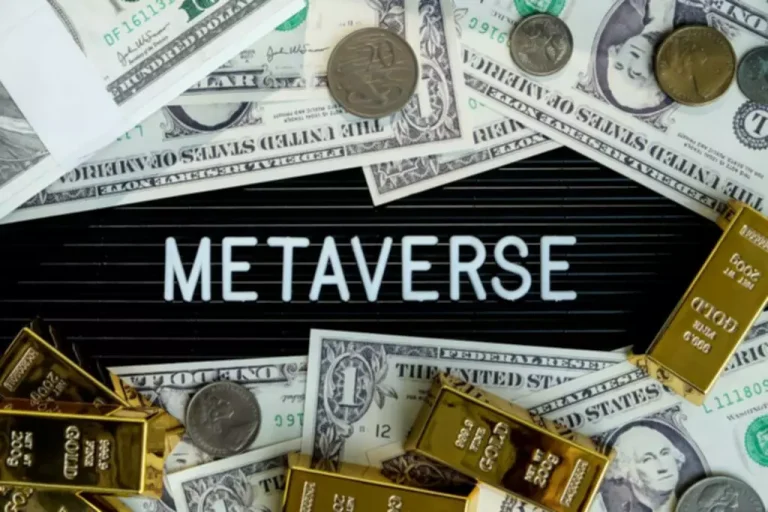Content
Finally, HFT https://www.xcritical.com/ benefits from high trading volume because the profit per unit is actually very small. Since the process is automated, a high-frequency trader can take lots of trades with enough volume to profit off even the smallest differences in price. The sheer number of trades that a high-frequency trader makes would be impractical or impossible for a manual trader. The evolution of technology plays a pivotal role in shaping the landscape of High Frequency Trading. From the development of faster processing capabilities to the utilization of artificial intelligence and machine learning algorithms, technological advancements continue to drive innovation in HFT strategies. By executing a large number of orders at high speeds, HFT firms add significant liquidity to the markets.
Common High-Frequency Trading Strategies
Event Arbitrage benefits from the short-term fluctuations in the high frequency trading explained market. Whenever a macroeconomic event occurs and/or there is some huge company-related news, the market fluctuates. The US has always been the main hub for high-frequency trading, which has accounted for at least half of all the volume within the US equity market every single year since 2008. Responsible HFT adhering to ethical practices contributes to tax revenue. Though often criticized for an unfair advantage, profitable HFT firms do pay significant taxes that fund government services.
Explore the markets with our free course
And many jurisdictions are even considering banning it altogether due to potential market manipulation. In the Q report, the company reported $3.9 billion in managed 13F securities and a top 10 holdings concentration of 32.39%. Tower Research Capital LLC’s largest holding is SPDR S&P 500 ETF Trust with shares held of 1,339,362. This strategy benefits from the temporary deviations from important historic statistical relationships of financial assets. IG International Limited is part of the IG Group and its ultimate parent company is IG Group Holdings Plc.
Benefits of Using Dedicated Servers for Trading
While adding market efficiency by correcting anomalies, regulators watch that strategies do not manipulate markets. With oversight, stat arb fosters price discovery, liquidity, and relationships grounded in fundamental value. The firms engaged in HFT face risks that include software anomalies, quickly changing market conditions, and compliance. Reliant on technology, HFT firms are quite vulnerable to programming glitches, system failures, and cybersecurity threats. An early, infamous case involving Knight Capital, a then-major HFT firm, shows just how fast things can go wrong in these firms despite their sophistication. After a software glitch, Knight accidentally bought and sold millions of shares Aug. 1, 2012, in 150 stocks in that day’s first 45 minutes of trading, resulting in a loss of $440 million.
HFT software development stages
Traders with the fastest execution speeds are generally more profitable than those with slower execution speeds. HFT is also characterized by high turnover rates and order-to-trade ratios. HFT systems are increasingly being designed using cloud computing and microservices architecture, which allows for more flexible and scalable systems. By leveraging cloud computing infrastructure, HFT systems can quickly scale up or down as needed to accommodate changes in market conditions. HFT systems must comply with a wide range of regulatory requirements, including rules related to market manipulation, data privacy, and cybersecurity. This requires careful attention to detail and ongoing compliance monitoring to ensure that the system remains in compliance with all relevant regulations.
Visit our advanced platform section
That’s not all; your dedicated trading server will be powered by an E5 or Gold series processor with a whopping 256 GB RAM and server-grade SSD driver to deliver you blazing performance. From Los Angeles, New York, London, and Frankfurt to Mumbai, Hong Kong, and Tokyo, the servers are situated near all major stock exchanges to ensure minimal latency of up to 1 ms. The platform enables high-frequency trading through multiple terminals. This dedicated server provider comes with a customizable hardware configuration, which includes the likes of Intel Xeon process, Nvidia A4000 GPU, 2TB storage, top FX brokers, etc. Now, let’s take a look at the list of the best-dedicated trading servers.
We are the experts in trading software development
Another trend is the automation of trading processes from start to finish. This includes algorithmic development, strategy design, pre-trade analysis, trade execution, post-trade processing, and risk management. Full automation enables HFT to scale dramatically while minimizing humans in the loop. However, automating too much could also increase the consequences of algo “flash crashes.” Finding the right balance will help avoid catastrophic failures. In April 2010, SEBI notified regulations related to direct market access, colocation, and algorithmic trading.
While it was meant to provide a more transparent and level playing field between the largest players in the financial market, everyone else was put at a disadvantage. HFT has become a major force in equity markets due to its substantial profit potential from small, repetitive trades executed at blazing speeds. However, as competition intensifies and regulators intervene, the profitability of HFT has come under pressure in recent years. Another major controversy is the lack of transparency about HFT activities to regulators and the public. The “black box” nature makes it difficult to analyze their market impact. However, mandatory disclosures could expose valuable IP to competitors.
Monitoring of algo orders, kill switches, minimum resting times, etc., is common across jurisdictions. However, specific regulations continue to evolve with the nature of HFT strategies and technologies. Additionally, HFT firms exert great effort to minimize technical errors and flawed order execution. Their trading infrastructure is engineered for speed, determinism, and precision. Strategies are back-tested extensively before live deployment to weed out undesirable behaviors. Firms meticulously monitor system performance and trading results to identify any potential bugs or degraded accuracy.
With data centers located in Chicago, London, Zurich, New York, or other top financial cities, FXvm ensures low latency throughout. Moreover, the integration of cloud computing and big data analytics has enabled HFT firms to process vast amounts of information in real-time, enhancing their decision-making processes and trade execution speeds. Institutional investors, on the other hand, may find opportunities to leverage HFT strategies to enhance their own trading activities.
We are a team of dedicated industry professionals and financial markets enthusiasts committed to providing you with trading education and financial markets commentary. Our goal is to help empower you with the knowledge you need to trade in the markets effectively. HFT contributes to the financial markets in several ways, enhancing liquidity and narrowing the bid-ask spread.
Often, a market maker belongs to a firm and can use high-frequency trading software. High-frequency trading algorithms present a challenge to the average retail trader. The platforms allow traders to scan many markets and place millions of orders in a matter of seconds.
The algorithms that power HFT systems must be continuously refined and optimized to ensure that they remain profitable in a rapidly changing market environment. This involves the use of advanced statistical analysis and machine learning techniques to identify patterns and trends in market data and adjust trading strategies accordingly. High-frequency trading (HFT) is a type of trading strategy that uses powerful computer algorithms to execute trades at very high speeds and frequencies. This approach relies on complex algorithms and advanced technological infrastructure to analyze large amounts of data and execute trades in fractions of a second. With all the data centers located in the closest proximity to top trading exchanges, Trade Future 4 Less offers you the lowest latency during trading hours. The unlimited market data access through its dedicated server also makes it easy to perform a variety of trades in real-time.
- Optiver is a proprietary trading firm with nine locations across Europe, Asia-Pacific, and North America.
- High-frequency trading is highly debated and charges have been levelled against many HFT firms for illegal activities.
- The NYSE pays these firms a rebate, as an incentive, for providing the required liquidity.
- It places orders that are instant and accurate, but not necessarily short-term holds.
- Machine learning uncovers complex statistical interrelationships between securities in different sectors and asset classes.
- This finding represented the first trend shift away from other studies which confirmed a positive impact on price discovery, for example, the 2009 study from Hendershott and Riordan.
By continuously posting competitive quotes, market makers improve readability, especially for low-volume securities. High-frequency trading (HFT) uses algorithms and extremely fast connections to make rapid trades, often in fractions of a second. It frequently involves the use of proprietary tools and computer programs that analyze markets, identify trends, and execute trades for very short-term gains.
The rapid rise of high-frequency trading came into the public spotlight in the May 6, 2010, Flash Crash. On that day, the Dow Jones Industrial Average plunged over 600 points in minutes before rebounding almost as quickly. An SEC investigation found that HFT strategies exacerbated the decline by rapidly pulling liquidity from the market.
At this time, HFT proprietary traders flourished, Yue Malan, senior analyst and consultant for Aite Group, explained. This allowed cross-market trading to flourish, according to Scott Bauguess, head of the financial markets regulation at McCombs School of Business at the University of Texas. HFT trading is legal, provided the firm is employing legitimate trading methods.
As security improves, cloud-based processing offers cost efficiencies at scale. However, migrating to third-party cloud servers also entails privacy risks and reduced control. Regulatory comfort with widespread cloud usage in finance remains limited. Until data security and sovereignty concerns are addressed, cloud adoption by HFT will be gradual. Their algorithms react within microseconds to new data or price changes on related assets.
Firms are also broadening beyond latency strategies towards large data analysis. HFT firms are also aiming to work smarter, not only searching for speed, Mezger said. The impetus for efforts to modernise the securities markets was detailed in an opinion to the SEC’s approval vote for Regulation National Market System (Reg NMS). HFT was developed and took hold after 2005, when the SEC took efforts to modernise the securities markets. Let’s explore more about the types of HFT firms, their strategies, who the major players are, and more. While this may work, it also brings with it the need for increased computer power and unknown risks when it comes to how the AI will learn and act.
And that it takes advantage of expensive and sophisticated software to exploit the markets. That includes duking it out every once in a while to see who’s boss. It places orders that are instant and accurate, but not necessarily short-term holds. It’s easy to think high-frequency trading and algorithmic trading are the same.








